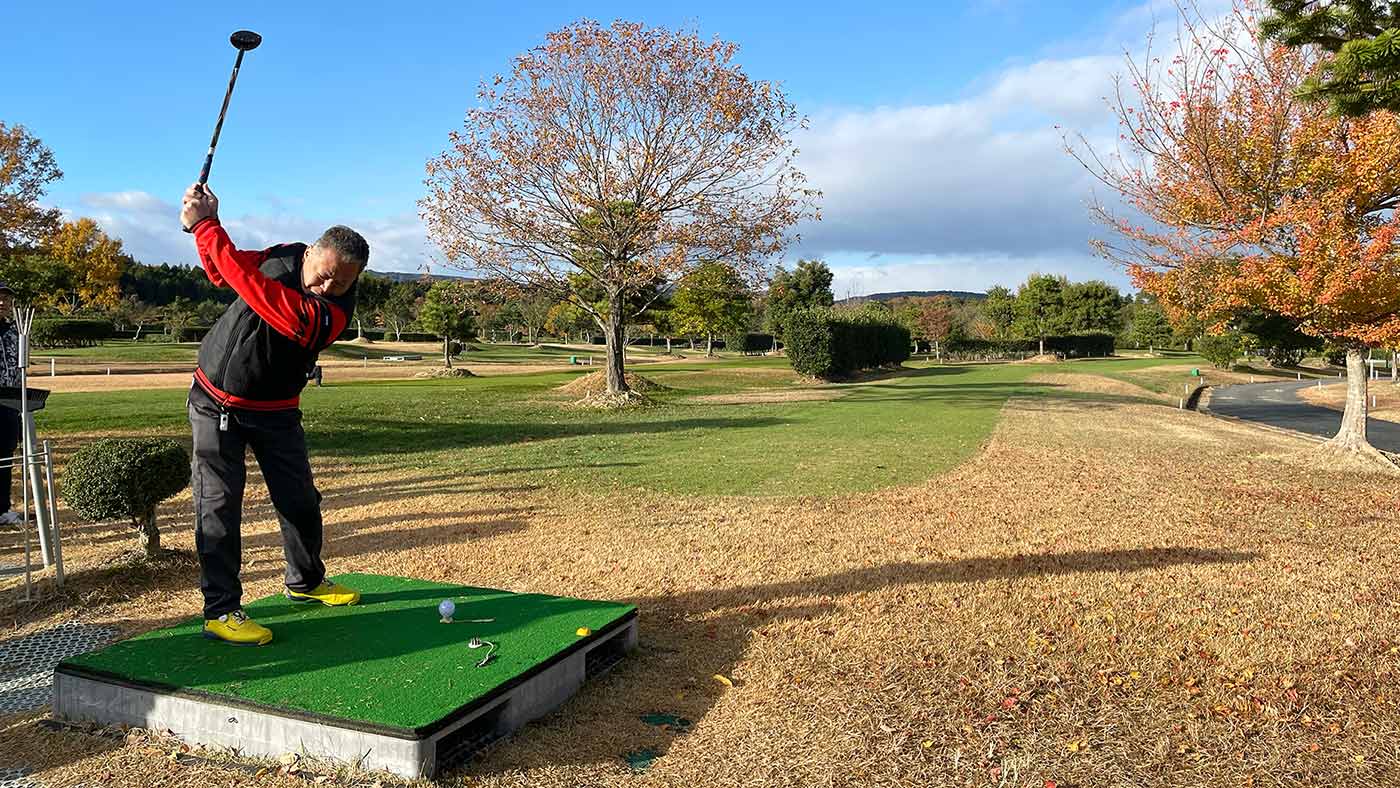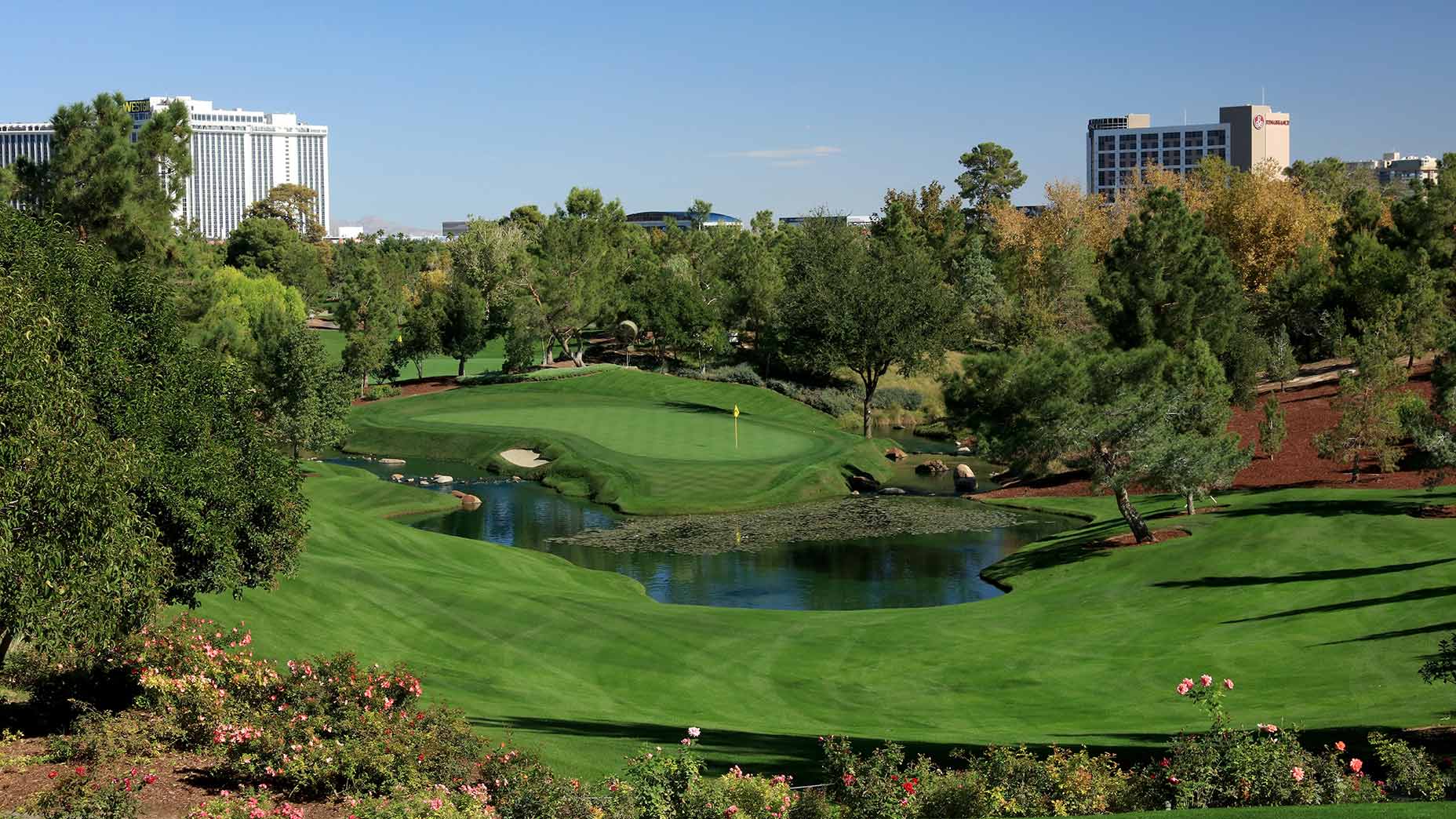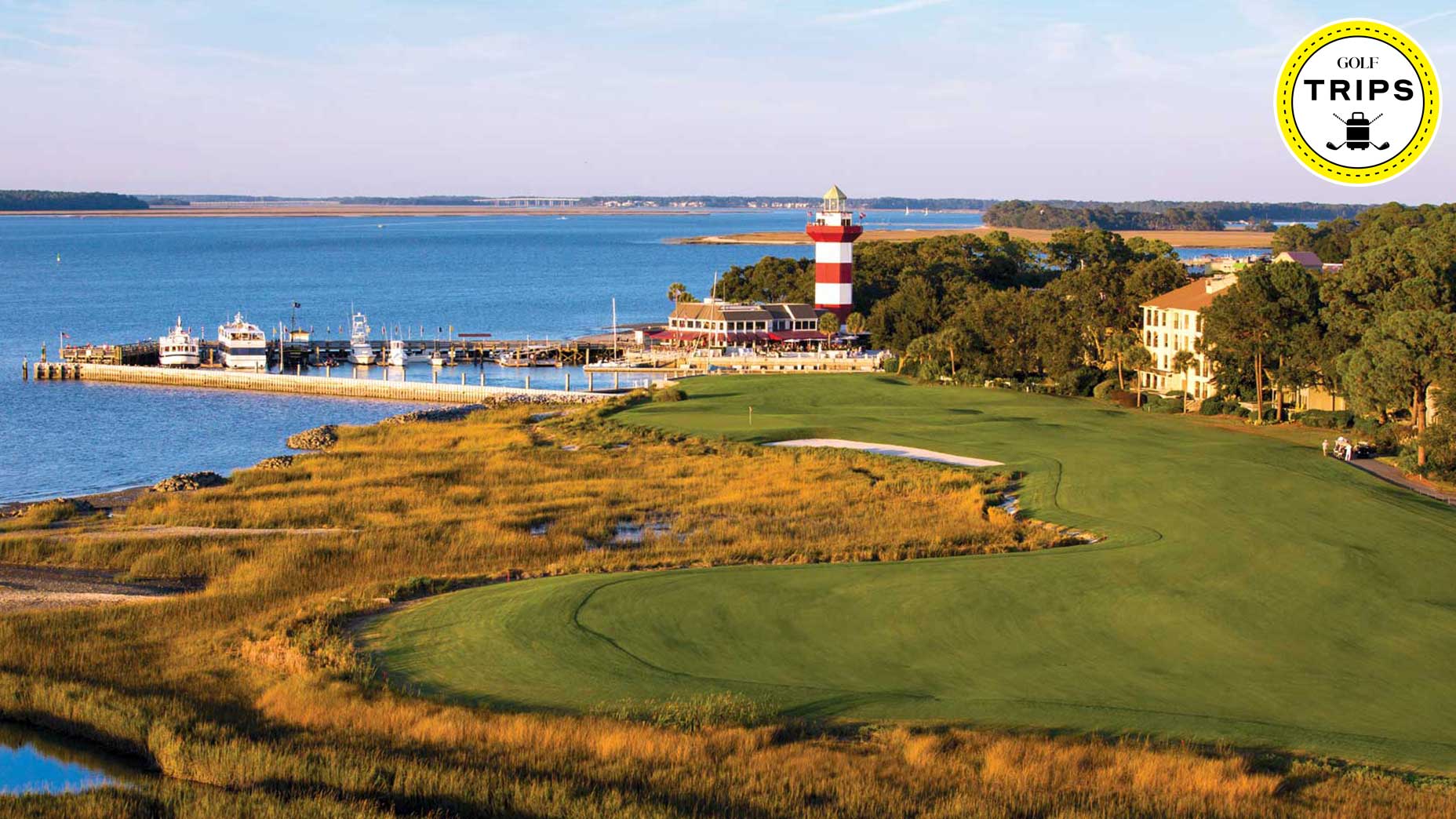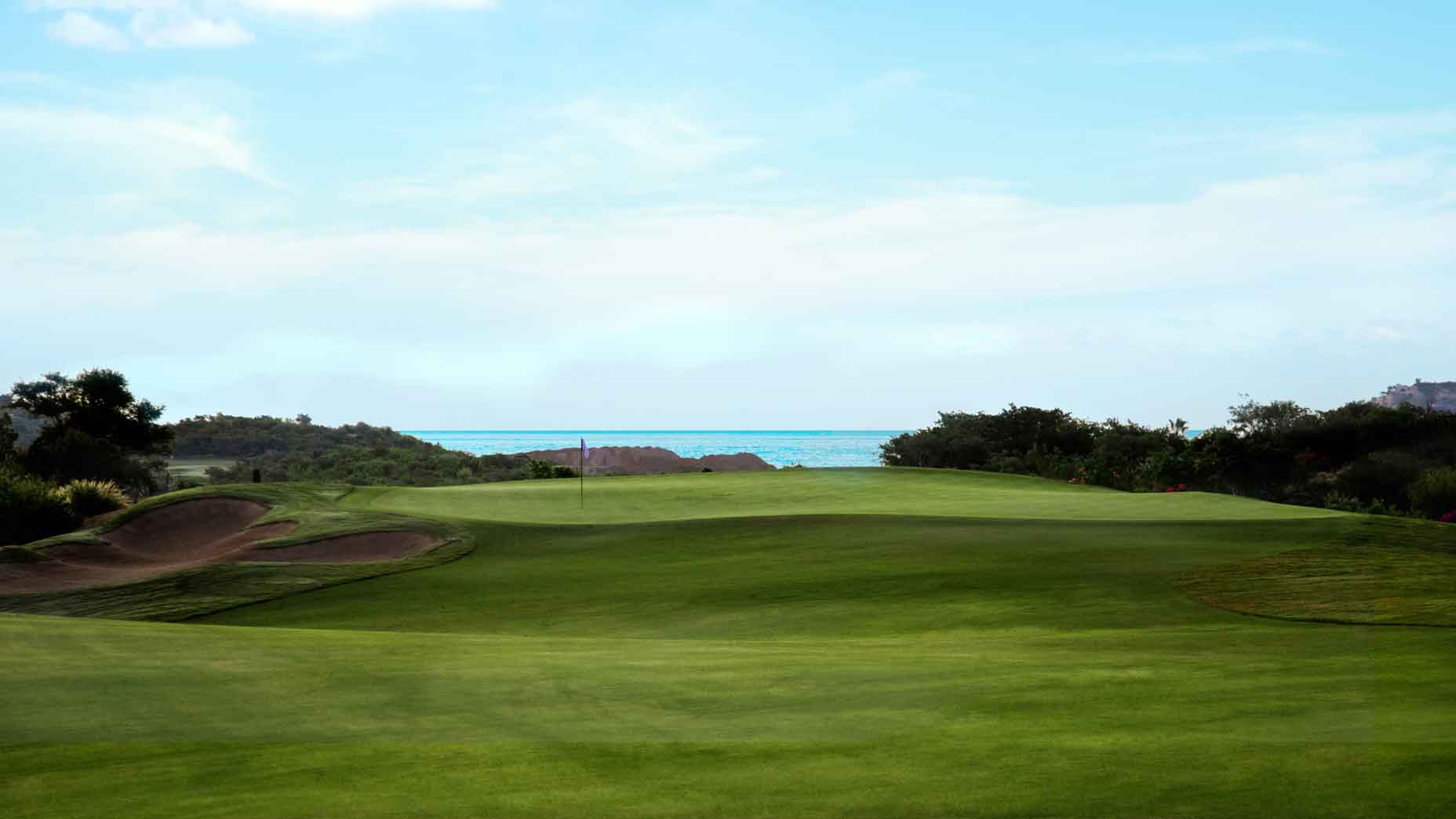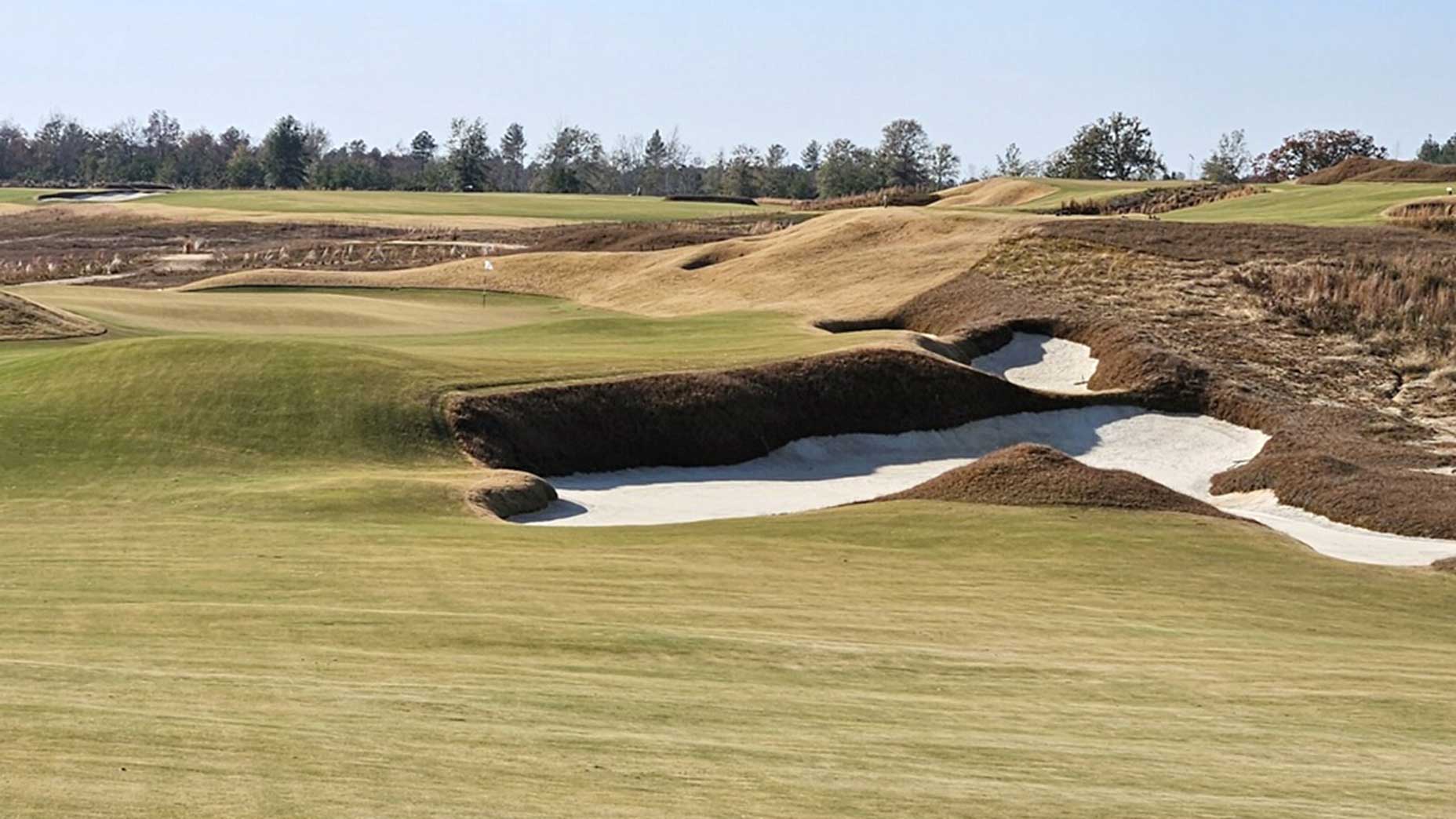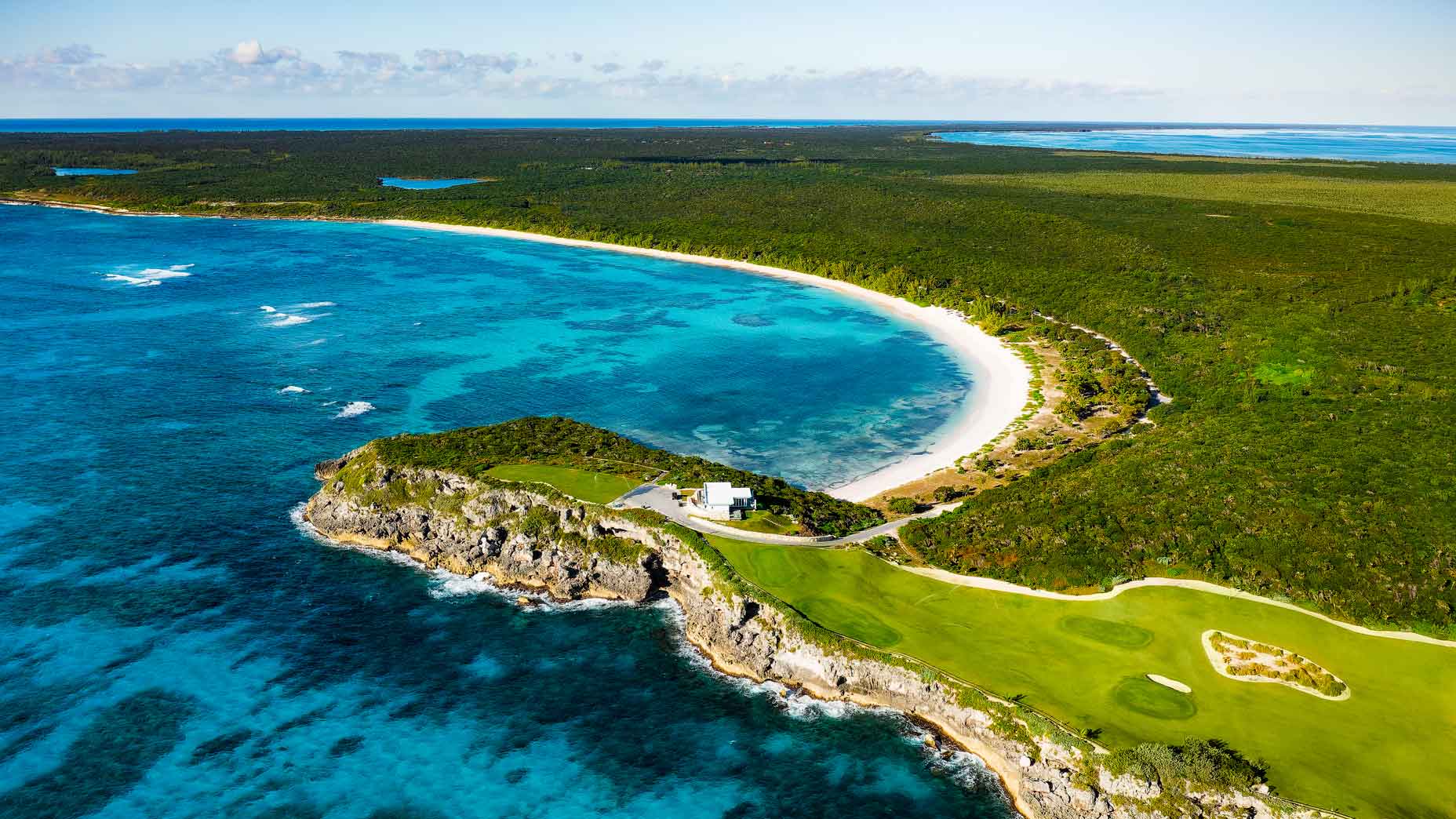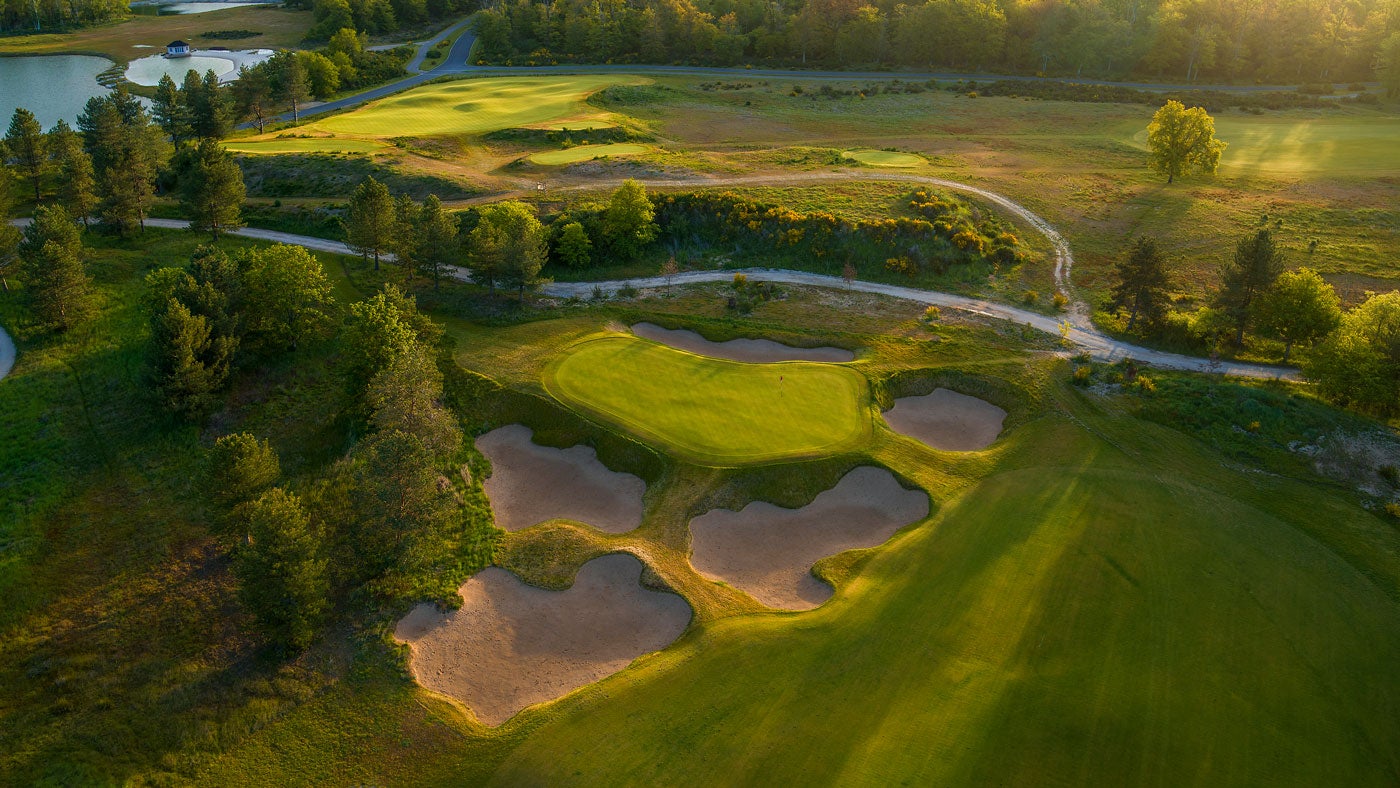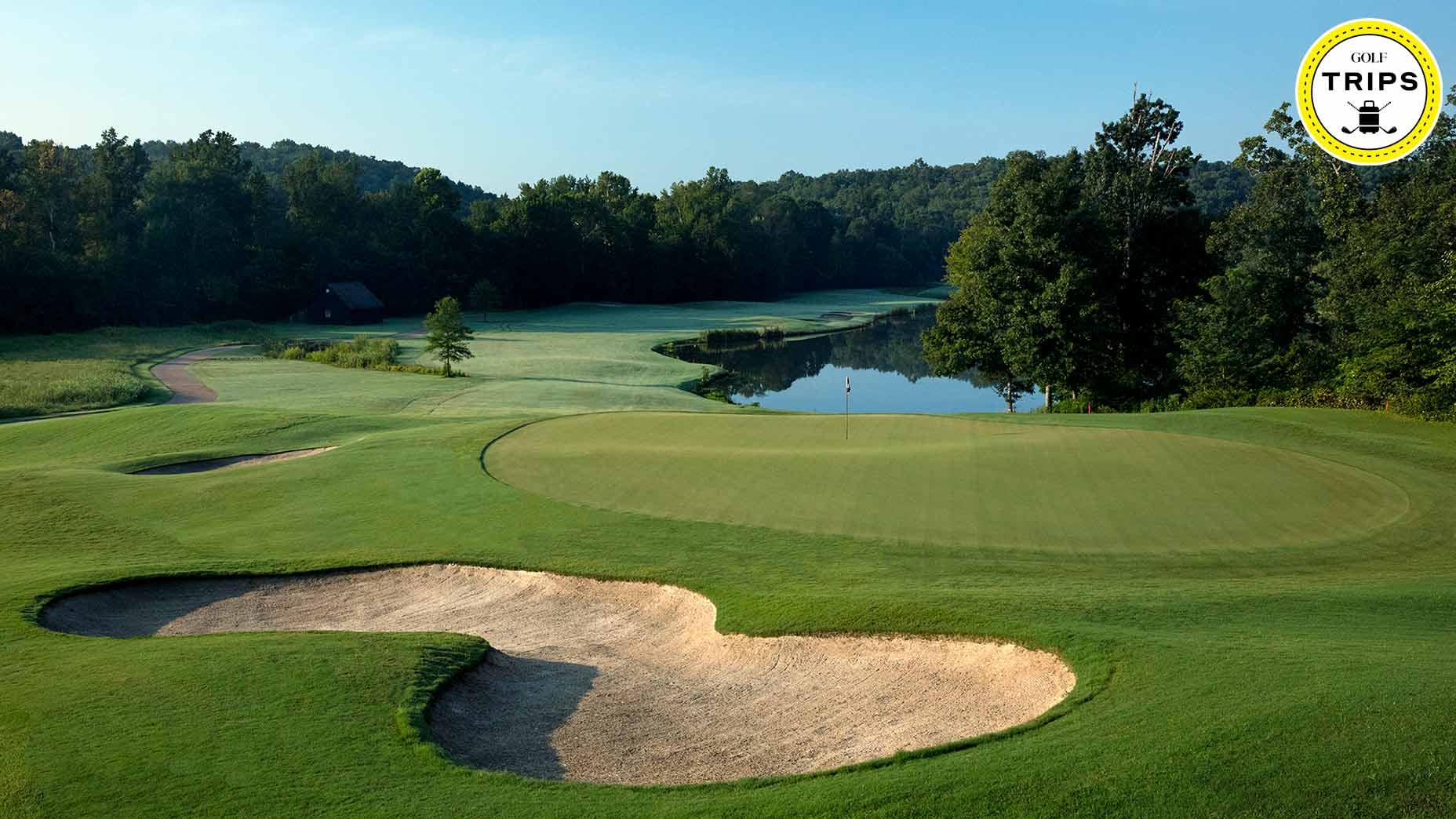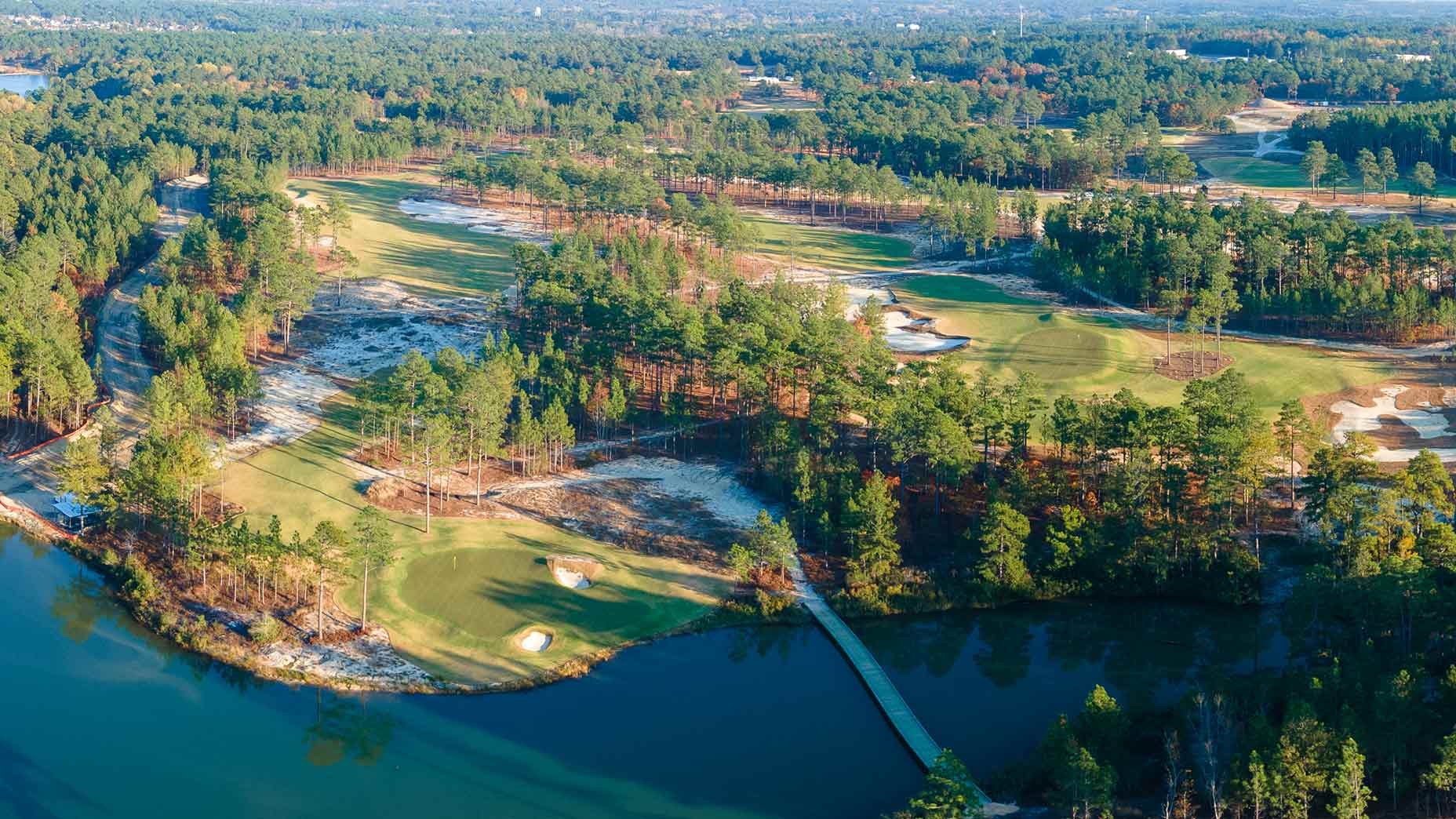SOMA, Japan — I’m beside 480 other competitors at the 29th JALCUP National Park Golf Championship. They’ve come to Soma City, Fukushima, from across Japan. Okinawa. Tokyo. Sapporo. Journeys were long — as evidenced by the many campervans, minibuses and full tour buses filling the parking lot of Soma-Koyo Park Golf Course this morning. One of my playing partners, Yamamoto-san, who manufactures high-end Park Golf clubs, took a 17-hour ferry here from Hokkaido. (“Sea was…very rough,” he murmurs queasily.)
We stand on the main lawn in the bright sunshine, 481 golfers forming nine orderly lines behind course signs. Everyone has a pouch clipped to their back belt containing two balls, a scorecard, pencil, divot tool and other brightly colored accouterments — Park Golf swag. Dutifully, our group waits.
“What happens now?” I whisper to my friend, Timbah.
Suddenly, all around me, I hear classical music. And then, a gentle recorded voice. And then, without warning, everyone begins to stretch. At the same time. To the same moves. A perfectly choreographed ballet. “It’s called ‘Radio Exercise,’ Timbah says, following along. “Everyone here’s been doing this routine since they were 5 years old.” The stretching continues in earnest to the music. A tender performance piece of 80-year-olds who, for this brief moment, could be 5 again.
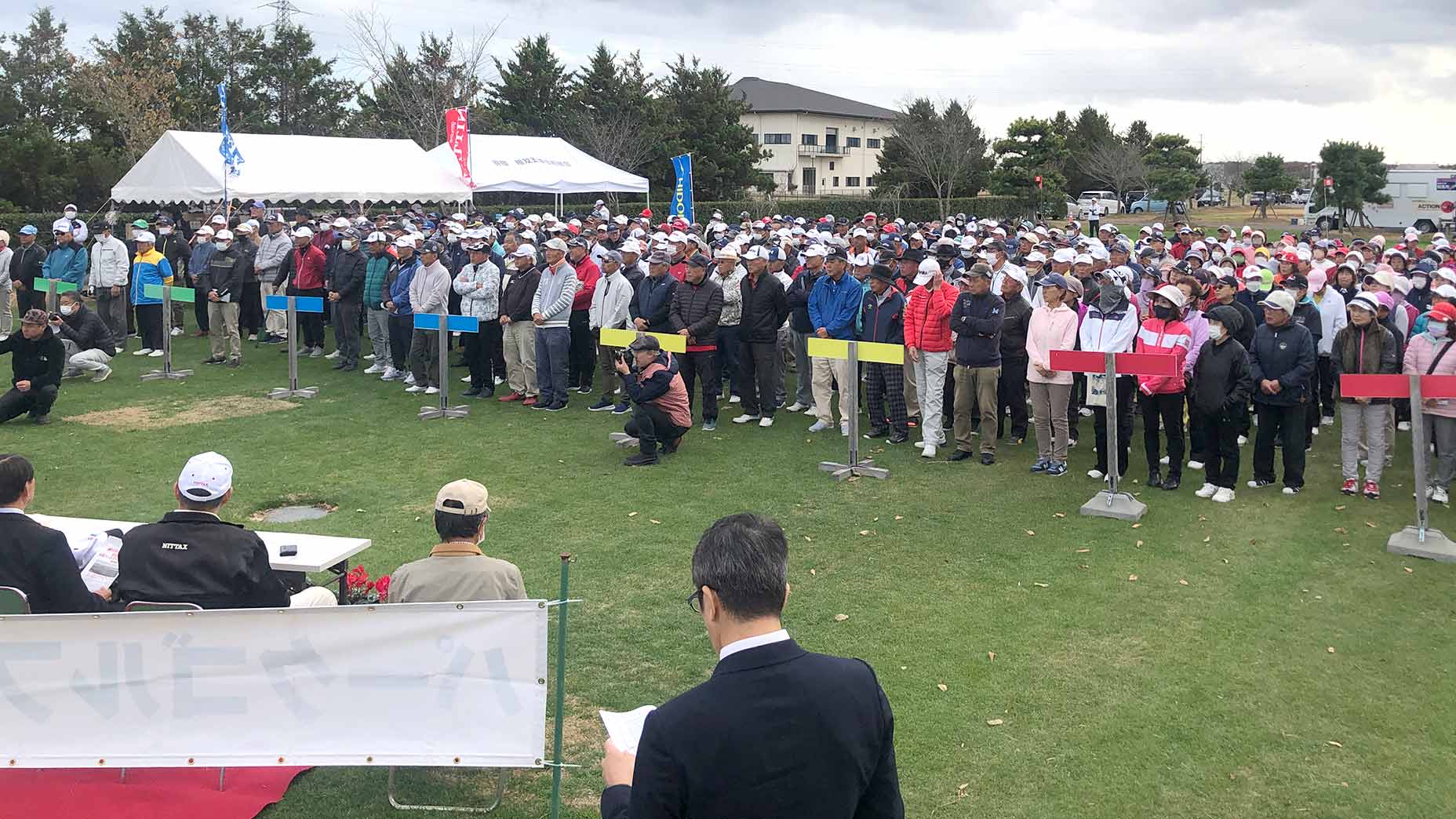
Park Golf is an obsession in Japan. There are 1,200 Park Golf courses and 500,000 Park golfers — many in their 80s and 90s. Holes are short — capped at 110 yards for a par-5, dropping to 33 yards for the shortest par-3. The cups are salad-plate-sized, the balls are billiard-sized and only one club is used — a cross between a putter and a croquet mallet. (Callaway and Mizuno, getting in on the action, both manufacture Park Golf clubs; one high-end club sells for $1,700.) The Park Golf courses in Japan vary like an omakase tasting menu, from exquisitely manicured seaside courses in Okinawa to Hokkaido’s “Up-Down” course with hills higher than St. Andrews’ Himalayas putting green. There are indoor Park Golf courses. There’s even a snow Park Golf course.
I first heard about Park Golf from my home in the Land of the Rising Pigeons (New York City). A childhood friend of mine, Timbah Bell, had moved to Japan, teaching English on the wild northern island of Hokkaido, where he’d become a Park Golf devotee. I was intrigued. Although I hadn’t spent much time in Japan, I’d caddied for countless Japanese golfers in St. Andrews over my 11 caddie seasons there. They were, consistently, the kindest people I met, so happy to be there and so generous. (Many would also jog down fairways between shots.) They’d frequently bring gifts for the caddies. Packed lunches. Small presents. One caddie friend of mine received a full wind-chime on the first tee. Another caddie friend received a sleeve of golf balls — each ball complete with a logo of the Japanese guy’s smiling face.
As St. Andrews caddies, we all knew the story of Tommy Nakajima, the Japanese pro. In contention through 16 holes of the third round at the 1978 Open in St. Andrews, Nakajima putted into the Road Hole bunker, making a 9. My Japanese golfers always had one question for me during rounds: “Where is Tommy’s bunker?” Less widely known is that after finishing the hole, 23-year-old Nakajima turned to his 15-year-old local caddie, with whom he’d teamed up to win local qualifying, and said to the boy, very quietly, “I’m sorry, Neil.”
It is moments such as this — moments of profound Japanese honor — that stick with me. Matsuyama’s caddie bowing down the 18th fairway at Augusta, privately thanking the course after their victory. Or Japanese soccer fans picking up trash at the World Cup, after matches in which their team wasn’t even playing. I even remember, as an 11-year-old, watching Isao Aoki on TV — the old Japanese pro smiling in the Scottsdale sunshine while battling Jack Nicklaus at The Tradition — and just thinking, “This guy rules.”
All of these memories left me eager for a Japanese Park Golf adventure. I emailed the Nippon Park Golf Association, responsible for the rules of the game (an 82-page rule book!) and its full calendar of tournaments. I heard back from the secretary general, Tomoaki Hama (“Hama-san”), one of the founders of Park Golf.

“Of the Park Golf tournaments,” Hama-san wrote, “the 29th JALCUP Soma Matsukawaura National Park Golf Championship in November is the largest and most competitive.” I asked if I could enter. “You would first need to join the one official Park Golf course in America, Destroyer Park Golf Course, and get permission to represent them. If you do that, you can compete,” he replied, before adding a warning: “but the skill level at the Championship is very high. Last year for 81 holes (Par 297), the winning score was 78-under-par (219) and the 213th place finisher was 14-under-par (283).” I wondered if Hama-san knew the 1st-tee warning sign at Bethpage Black.
I looked up Destroyer Park Golf Course and saw that it was near Buffalo, N.Y. I also saw that it was founded by Dick “The Destroyer” Beyer, a 1960s American wrestling icon in Japan. I was also now pretty sure I’d need a practice round before the Championship. This was all sounding like a good idea.
The next few weeks moved quickly. I visited Destroyer Park Golf Course (an eight-hour Greyhound up from Manhattan) for a round with owners Kris Beyer and Chris Jones. I became a member of Destroyer Park, thus receiving permission to play in the All-Japan Park Golf Championship. I booked flights and secured an extra playing spot for Timbah, who flew down from Hokkaido with his partner Roo. Kris Beyer decided to fly over as well.
A month after my Destroyer Park round, I’m standing in Fukushima Prefecture, for the start of Japan’s National Championship.
Compared to quaint 18-holer Destroyer Park, Soma-Koyo Park Golf Course feels like a golfing Six Flags. There are a dizzying 81 holes on offer, comprising three 18-hole courses (“Tricky Course,” “Technique Course,” and “Enjoy Course”) plus a 27-hole course on the far left of the property (“Special Course”) that looks shockingly difficult. The tournament will be held on all 81 holes over two days — 45 holes today, 36 holes the next — a Park Golf ultramarathon with colorful gloves.
“Do you remember where I put my Park Golf club?” Timbah asks, looking around.
“Uh, I think it’s still on the rack,” I say, unsurely. The American squad feels unfocused.
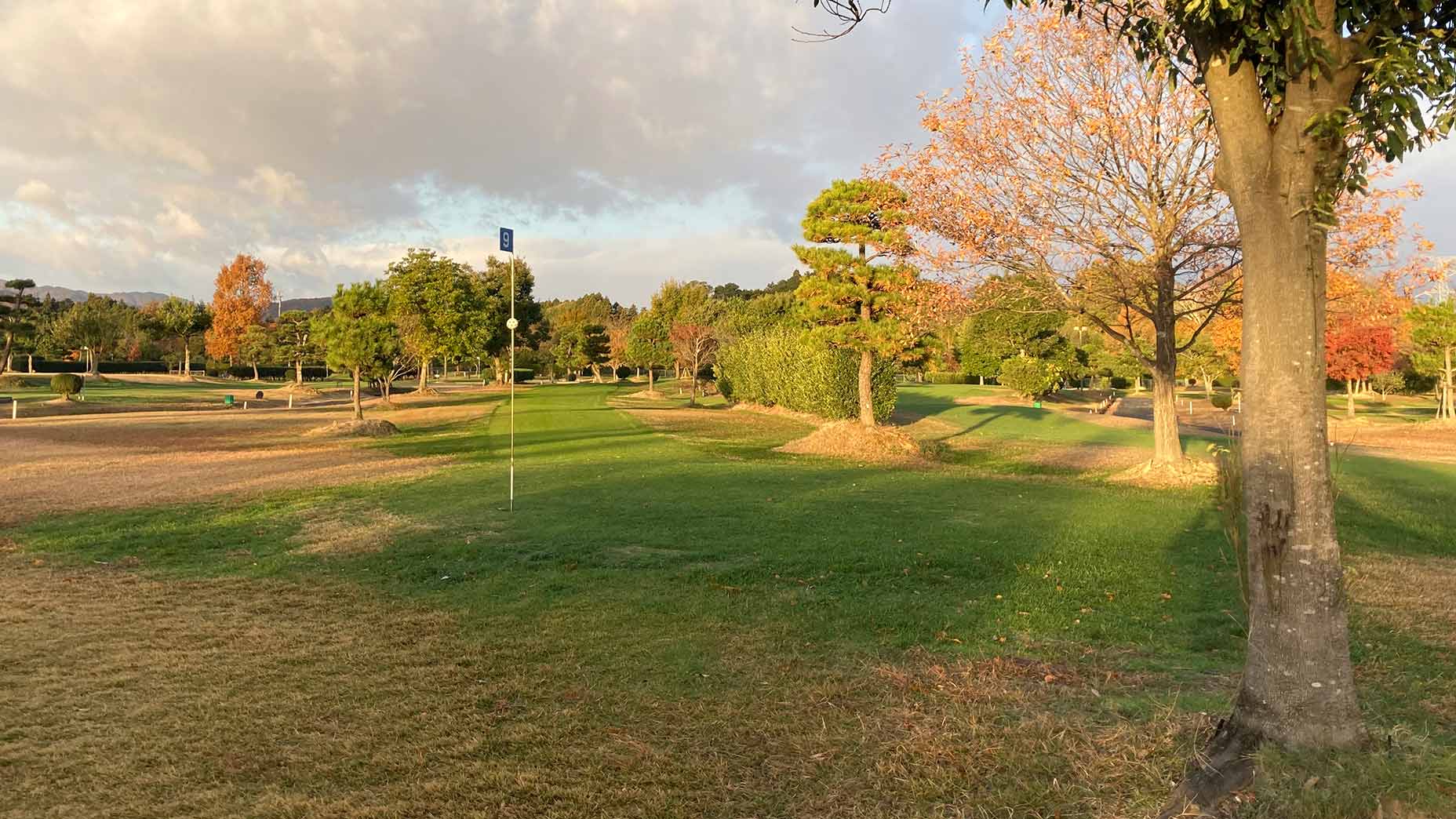
As Timbah hunts for his club, I think back to my practice-round lesson, and Chris Jones’ reminder that, “This is pretty different than regular golf.” Unlike normal clubs, a Park Golf club has zero loft, so ideal swings resemble punch-shots played off the extreme front foot. For longer holes, players sometimes open the clubface on tee shots and swing out-to-in for extra height. Once on the green, players putt normally. I’d shot three under during that Destroyer Park round: five under on the front, two over on the back (with stupid doubles on 17 and 18). Respectable, but nowhere near the numbers that were put up in last year’s championship.
We’re off on the Technique Course, opening with a 110-yard par-5, as a sudden fireworks explosion serves as our shotgun start. I’m paired with Timbah — the only other American — plus friendly Park Golf club manufacturers Yamamoto-san and Yashita-san. Eighty-one holes separate me from glory. As 20 people watch, Yamamoto-san takes a full crack, slamming his drive down the middle. “Inay!” someone yells (meaning “great”). My turn. I suddenly notice that this hole is tight. A dogleg with OB hugging the right side. I do a short, weak practice swing, then make an even shorter, weaker real swing. The ball trundles down the fairway, safe, yet well short of Yamamoto-san’s. Nobody yells “Inay.”
I make some immediate observations. First, this is played quickly. Pace of play is sacred (and no wonder, considering the near-Herculean task of getting 481 players around 81 holes in two days). Holes fly by — it is all Timbah and I can do to mark our group’s scores (“Yamamoto-san? 3?”) before the next balls are in the air. Scottish golf, famed for its speed, soon feels played through sticky toffee pudding.
Second observation: everyone is amazing. Like, I actually don’t understand how everyone can be this good. Yamamoto-san and Yashita-san bash tee shots with lengthy hang times and hole putts from different Japanese area codes. Everywhere I look, 75-year-olds are playing like Jumbo Ozaki. But even amidst this high standard, Yamamoto-san is special. He drives the green on a par-5 and makes double-eagle. Soon after, he makes a hole-in-one. He has the precision of a long-range marksman; the Steph Curry of Soma City. And like everyone else playing, he is incredibly modest. “Lucky,” he says, after holing a 20-footer as if it were a tap-in.
Heroic shots are humbly deflated with “Mah mah,” meaning “so-so.” Meanwhile, my rare 6-foot makes are followed by fist pumps that lose face for the group.
Third (and most pertinent) observation: these courses are devilish. Although each hole is a miniature work of art, with bonsai-beautiful landscaping, there’s out of bounds everywhere — often on both sides of the fairway, an 8-foot corridor left to thread. Yet the players around me uncork massive swings with no fear. I’m playing with nothing but fear. And these are the easy courses — we don’t even reach the Mt. Fuji-esque Special Course until tomorrow (to which I say a special arigato to God).
When the dust settles, Yamamoto-san is in 2nd place after Day 1. I recheck my scorecard — not easy since there are nine different courses crammed onto the same card and it’s in Japanese. I sign for 14 over, nine shots behind Timbah, and 51 behind Yamamoto-san.
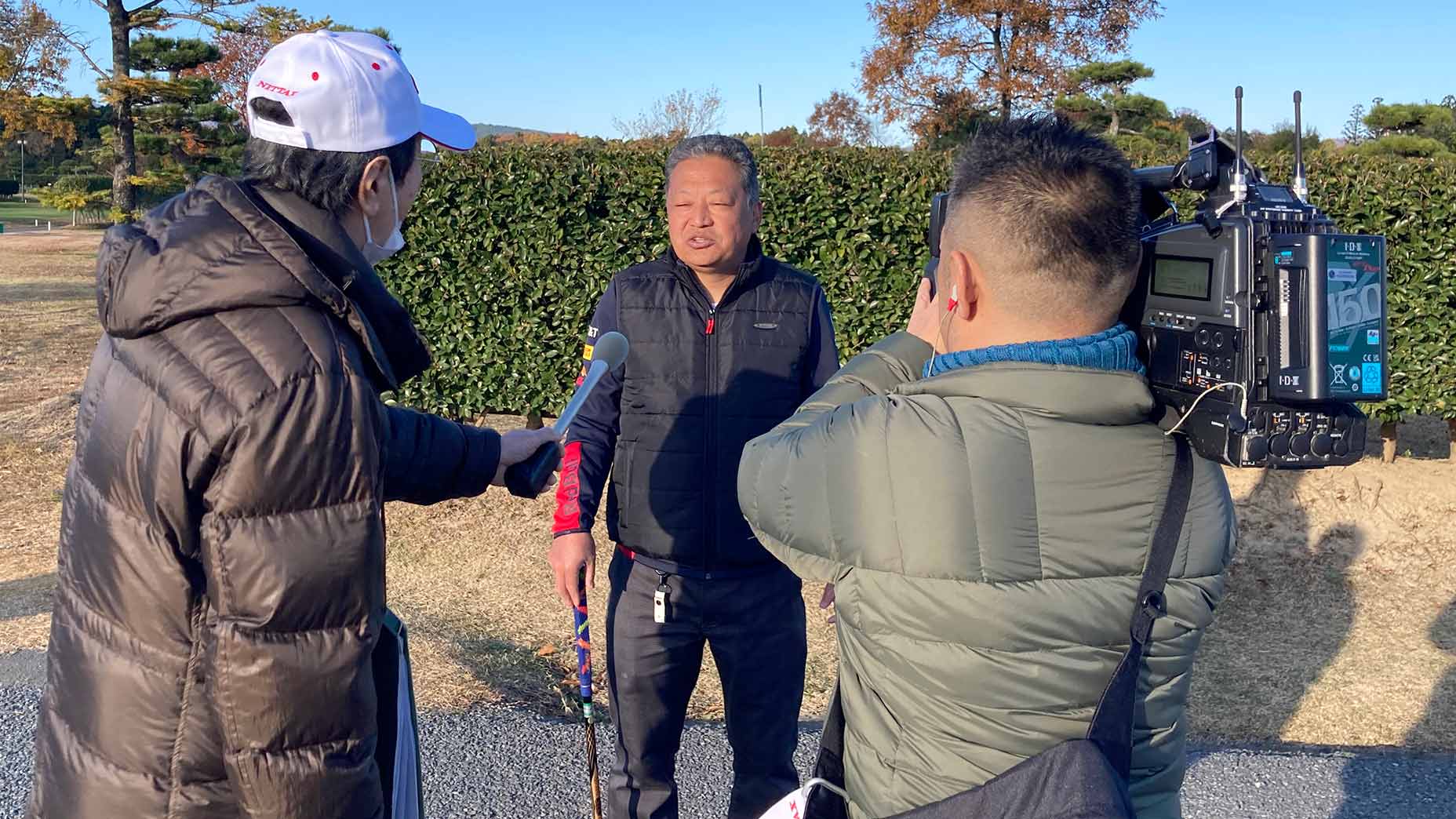
That evening, Timbah, Roo and I find a local Onsen (hot spring) in Soma City for a restorative soak. As Timbah and I sit in the men’s outdoor Onsen (sumo wrestling shown on a large poolside TV), I can’t help replaying the rounds.
“It’s just so tight out there!” I whine.
“You’ll play better tomorrow,” says Timbah.
“I was better at Destroyer Park.”
“Yeah, you said that a few times.”
Timbah and I both started playing golf at the same time, age 9, in Gloucester, Mass. We shared lessons at Sun ‘N Air driving range in Danvers, dodged mosquitos during rounds at Candlewood Golf Course in Ipswich. I think how nice it is that nearly 30 years later, Park Golf has brought us back together, on the other side of the world.
Day 2 breaks clear and cold over Soma-Koyo Park Golf Course, as early arrivals check the massive competitor sheet to determine course order. I spot Yamamoto-san being interviewed in front of a broadcast TV camera. He smiles humbly at the interviewer, but I know he has a real chance to win today. “Yesterday was OK,” he says to me after the interview, which feels like saying Shakespeare had a decent run in the 1500s.
At 8 a.m., all 481 competitors head to our assigned courses — a heroic J-pop anthem blasting from speakers as if we’re modern-day Gladiators. Timbah, Yamamoto-san, Yashita-san and I have four nines left to play — three of them on the hardest, hilliest nines in Soma City. In ski terms, if yesterday’s nines were green and blue runs, today’s Special Course nines include two black diamonds and one double-black. (Yamamoto-san puts it another way: “Special course: Difficult. Difficult. Very difficult!”) As I approach our Himalayan holes, I pass a man with a ball-holder attached to each of his sneakers. I’m confident that he’s beating me after yesterday — because everyone is beating me. Literally, everyone. Including 91-year-old Inooey Kazosan, this year’s oldest competitor.
Six fireworks announce the start of Day 2. Yamamoto-san takes a risky full swing off the 1st tee (seldom tried in Park Golf). The ball blasts down the fairway. “Inay!” I shout, giddily. Yamamoto-san’s title bid has begun.
Special Course doesn’t have much OB (about which I am thrilled), but there are fiercer obstacles. Elevated tees and greens with steep drop-offs. Putting surfaces that are reverse bowl-shaped like the greens at Pinehurst No. 2. This is Park Golf on steroids. And it demands a precision that I am far from possessing.
Throughout the round, I try to make some headway in my battle with par, but I’m just heading backwards. Kris has loaned me a pink Destroyer Park ball to use, but I’m bringing zero honor to her course. I have a bad feeling that Timbah and I will be the only two players over par. This looks even more possible when Timbah, who is playing better than me, gets his ball stuck shoulder-height in a hedge.
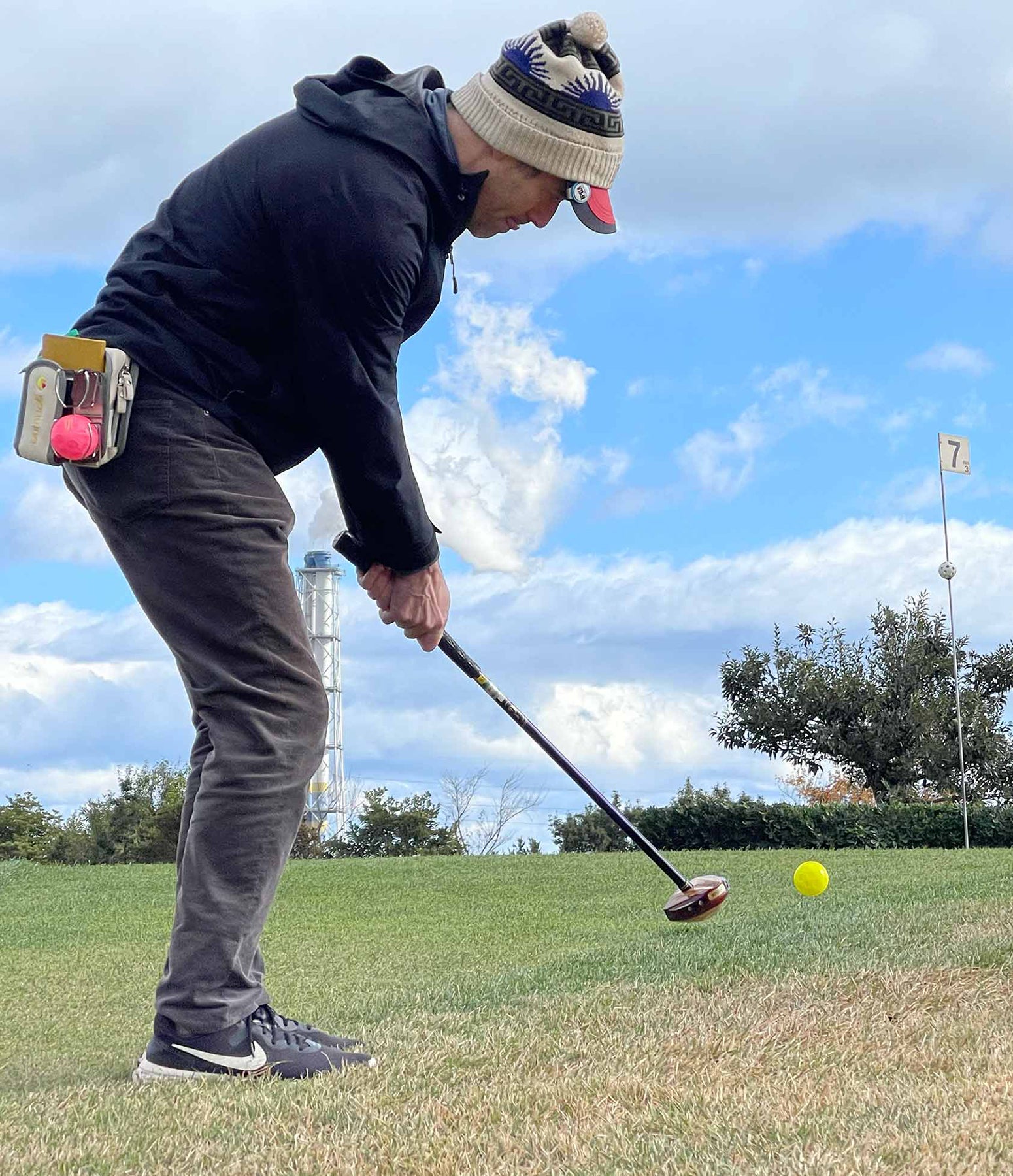
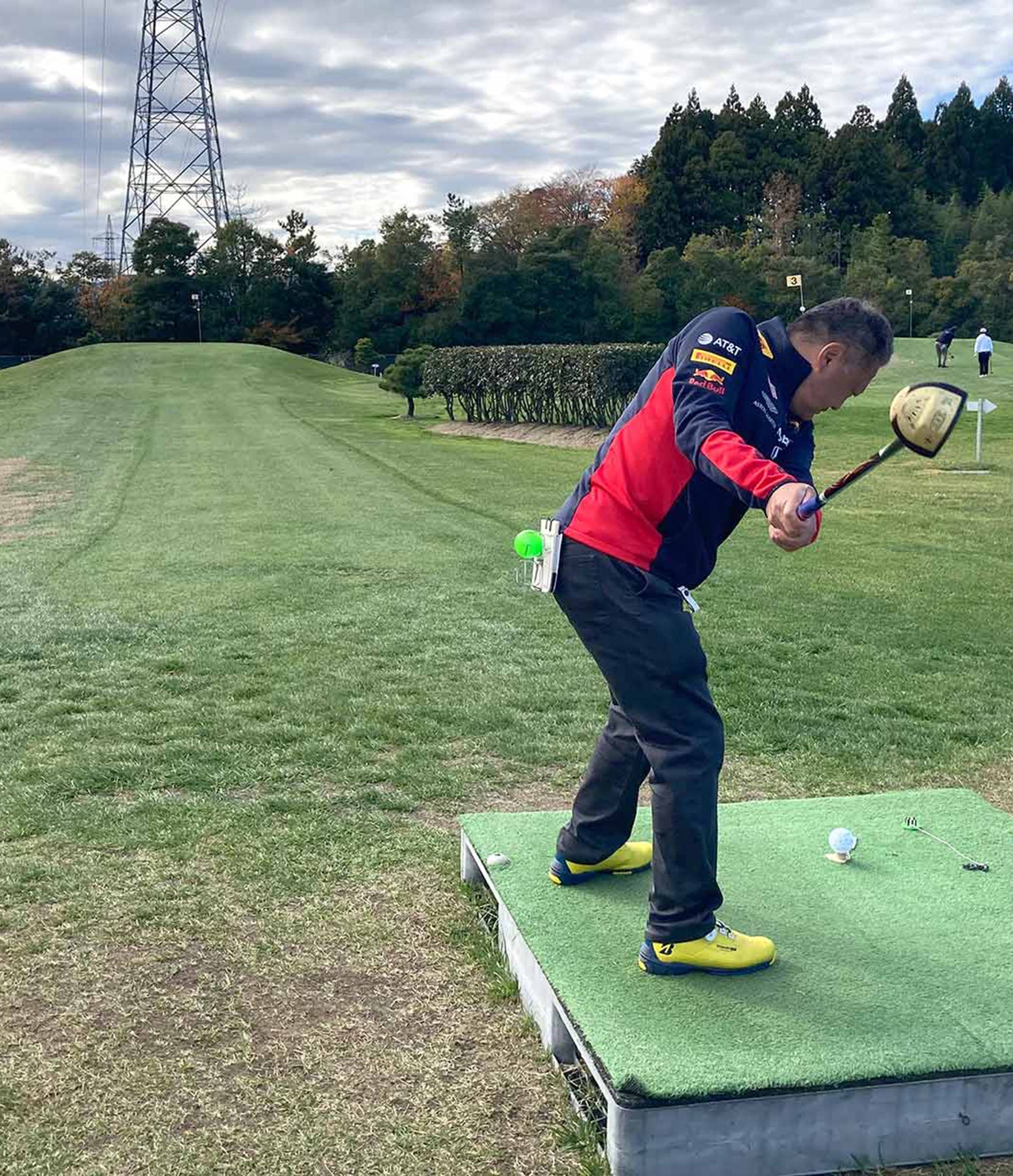
In a sport where it is basically a given that you’ll be under par, I finish 23 over. Yamamoto-san, struggling on the greens, is trying his best, but he’s just not soaring at the same Mt. Olympus-heights as yesterday. When we add up the final cards, Yamamoto-san is 62 under — 10 strokes behind the winner. He’s beaten me by 85 strokes, and I’ve lost to the winner by 95.
Or, I should say, winners. As I nurse my wounds, a crowd quickly forms behind the 1st tee of the Technique Course. A playoff is happening — for both the men’s and women’s divisions! The women are first. In front of a crowd of hundreds, Inaba Masako, a 76-year-old great-grandmother whose golf glove has little flowers printed on it, knocks her tee shot to a foot. The crowd swoons. Inaba-san’s opponent overshoots the green, then leaves her birdie attempt a few inches short. Inaba-san taps in for the birdie and the win.
I find her behind the green. “I was more calm in the playoff,” she happily tells me (as Roo translates), “but I was feeling very nervous the last five holes!” She’s played Park Golf for 20 years, won this event in 2016 and has traveled all over Japan to play Park Golf tournaments, but shockingly, has never played traditional golf.
The men’s playoff begins next. Both golfers tie the 1st hole with 3s, then head to No. 9 — a 55-yard dogleg par-4. Hiroaki Kusano, a 73-year-old from Sendai, cuts the dogleg onto the green, his ball rolling to 12 feet. Kusano-san’s opponent plays short, then lips out a 25-footer from the rough. Seconds later (this is played at breakneck speed) Kusano-san drains his 12-foot eagle for the win. His friends mob him. “It’s unbelievable,” he tells me, smiling proudly. “When I was practicing, I never got this score. But I felt very calm in the playoff.” Kusano-san’s friends add a parting thought to Roo. “They’re saying, ‘Normally, we are better than him,’” Roo says.
At the award ceremony, triumphant violin music plays as winners are called up, presented with deep bows by Soma City’s vice mayor. (I’ve somehow beaten two people, but am not handed a prize for 479th place.) As I watch a 73-year-old grandfather and a 76-year-old great-grandmother hoist their first-place trophies, I think about what a lovely sport this is, in which you can win the season’s biggest championship in your mid-70s.
Behind the spectators, off by himself, I spot a solitary Japanese figure. He’s about 80-years-old, practicing his Park Golf swing in the air, as if secretly thinking, “I can do better next year.”
I understand his impulse. I have the same thought.
***
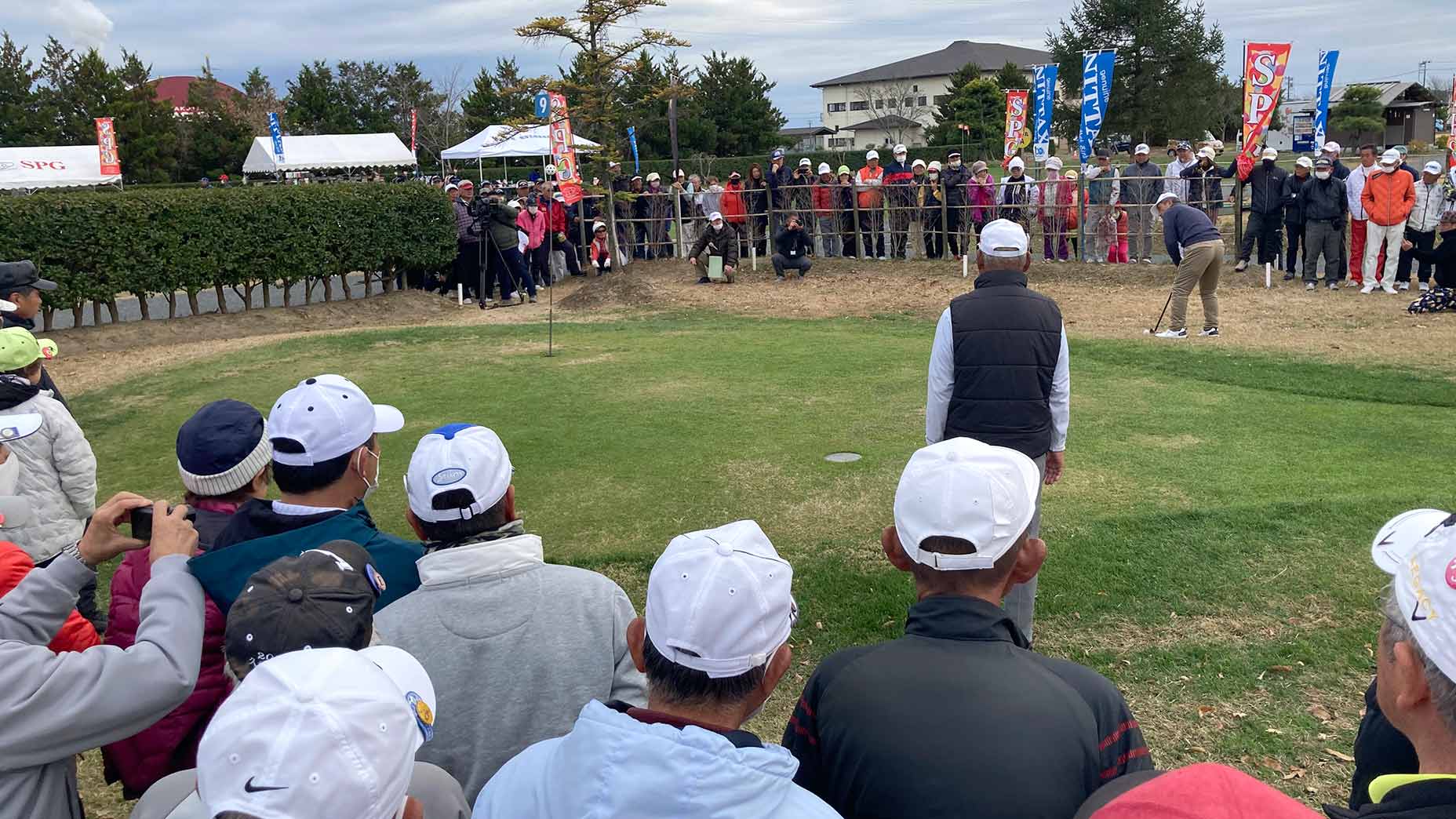
YOUR TURN: How to play in the All-Japan Park Golf Championship
When: Nov. 24-26, 2024
Where: Soma City, Fukushima Prefecture, Japan
How to get there: United Airlines and ANA fly direct from multiple U.S. cities to Tokyo. Round-trip fares start at $1,100. From Tokyo, take the Shinkansen bullet train to Sendai (1 1/2 hours) then the local train down to Soma City (1 hour) for $83.50 total.
How to register: Join Destroyer Park Golf Course in Buffalo, N.Y., where you can learn the game and grab some course swag (email here). Once you’re ready, Destroyer Park will help coordinate with the NPGA tournament officials to enter you in the tournament.
Where to stay in Tokyo before the tournament
Budget option: OMO3 Tokyo Akasaka. About $130/night. Conveniently located, hip and fun, with Wes Anderson-esque “Ranger Tour” of Akasaka’s neighborhood and in-room flower arranging “Flower Stay Activity.” A perfect base for Tokyo trips.
Lux option: Hoshinoya Tokyo. About $900/night. With its own private Onsen and rooftop samurai sword class, this luxury ryokan is an oasis in the city.
Visa Logistics: U.S. citizens staying less than 90 days do not need a visa.
What else to do while in Japan
In Tokyo, catch your own fish at Zauo Fishing Restaurant, eat conveyer belt sushi at Sushiro Shibuya, plus $10 Michelin-starred ramen(!) at Soba House, stroll through Tokyo’s own Central Park aka Shinjuku Gyoen National Garden, gift shop at Tokyu Hands Department Store (taking advantage of the amazing current Dollar-to-Yen exchange rate for Americans), marvel at the latest TeamLabs exhibition, then sing karaoke at Karaoke-Kan Asakusa.
Visit Kyoto (2 hours from Tokyo), where you can stay at the fantastic and friendly OMO5 Kyoto Sanjo (perfectly located next to Nishiki Market), climb epic Mt. Daimonji-Yama above Kyoto, then visit the Arashiyama Bamboo Grove, Ginkaku-ji Temple, Eikan-do Temple, Nanzen-ji Temple, Fushimi Inari Shrine, and the little-known Otagi Numbutsu-ji Temple, before strolling the ultra-cinematic streets of Ponto-cho district in the evening. Coffee at retro 1960s joint Rokuyosha Coffee; early and often.
Visit the stunning hot-spring mecca town of Kinosaki Onsen (2 1/2 hours from Kyoto by train) where you can stay at the stately ryokan Nishimuraya Hotel Shogetsutei (delicious breakfast buffet), while visiting all seven public Onsens (hot springs), before eating the world’s best beef for dinner at Gubigabu.
Oliver Horovitz is a New York City-based golf writer and the author of “An American Caddie in St. Andrews.” A former 11-year caddie on the Old Course in St. Andrews, Scotland, he has competed in the Mongolian National Open, Iceland’s midnight golf “Arctic Open,” and on the world’s highest golf course: Nepal’s Mustang Golf Course at 15,239 feet.

